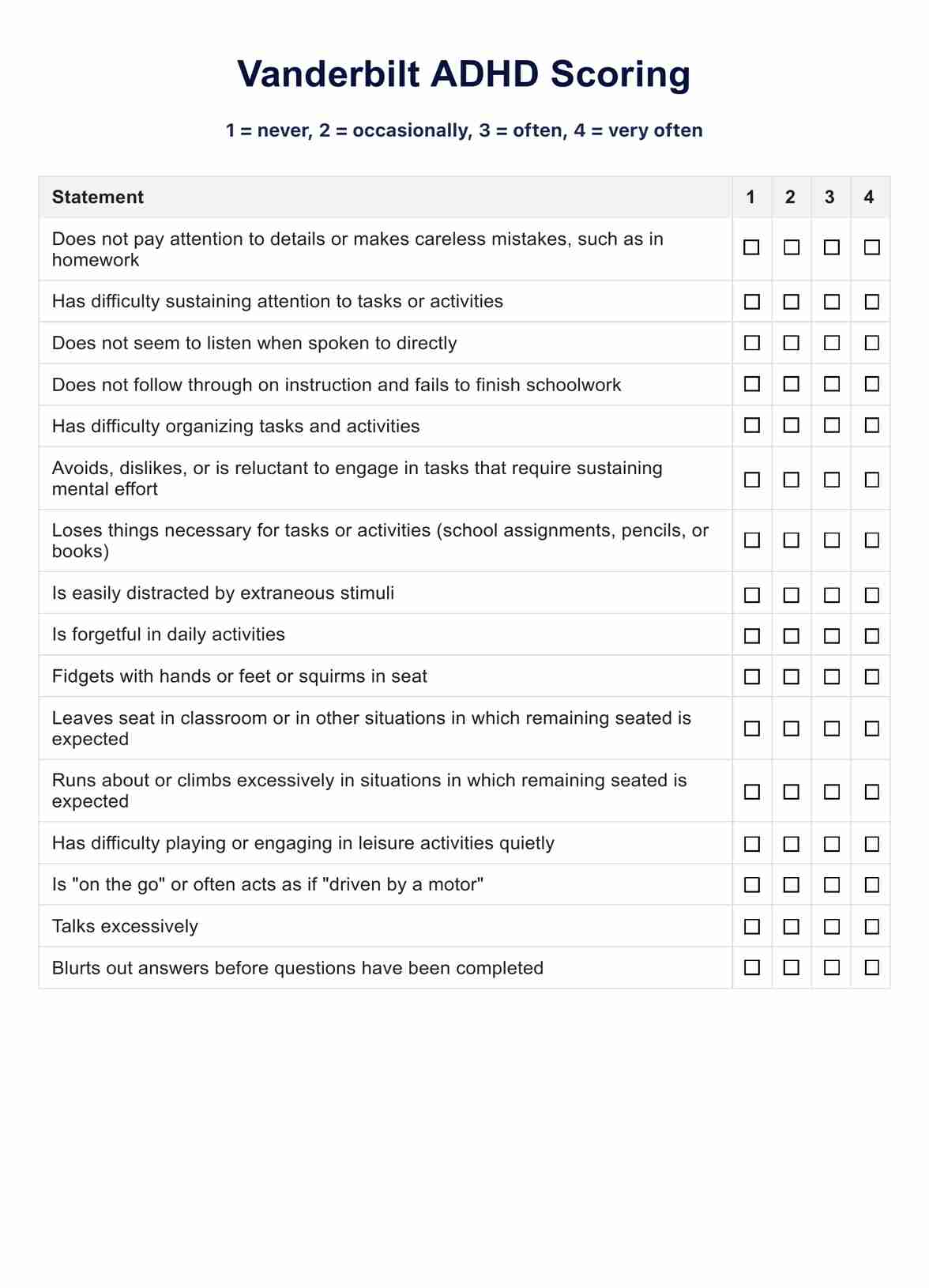Dimensional scoring analyzes the average frequency of symptoms in each domain (e.g., inattentiveness, hyperactivity-impulsivity), while symptom scoring counts the total presence of specific "positive" symptoms.

Vanderbilt ADHD Scoring Template
Streamline ADHD symptom assessment with our user-friendly Vanderbilt ADHD Scoring Template, providing practitioners with tools for enhanced cognitive insights.
Vanderbilt ADHD Scoring Template Template
Commonly asked questions
Compare your calculated scores to the Vanderbilt manual's age- and gender-normed tables. Scores within the "clinically significant" range suggest potential ADHD. It is essential to consult with a Doctor or other mental health specialist in developmental and behavioral pediatrics to get an official diagnosis.
Gathering information from both perspectives provides a more comprehensive view of the child's behavior across different settings. Teachers may pick up on behaviors such as careless mistakes, difficulty organizing tasks, difficulty waiting, difficulty playing, physical fights, quiet play activities, academic performance, school assignments performance, and other careless mistakes that may not be noticeable in the home environment.
EHR and practice management software
Get started for free
*No credit card required
Free
$0/usd
Unlimited clients
Telehealth
1GB of storage
Client portal text
Automated billing and online payments











